3D video tours of various labs in the Engineering Science Department, University of Oxford

Interactive tour
Tour our main teaching site, the Thom Building.
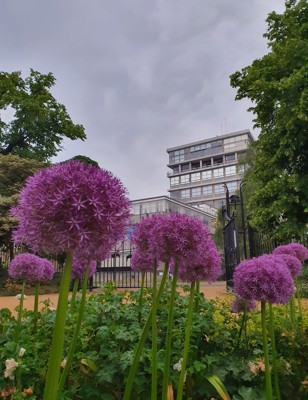 The Duke of Edinburgh opened the Thom Building, a new eight-story tower block, in 1963. The building still serves as the centre of our department today, although it has seen some changes since then.
The Duke of Edinburgh opened the Thom Building, a new eight-story tower block, in 1963. The building still serves as the centre of our department today, although it has seen some changes since then.
The Thom Building was designed at a time when drawing was still a key part of the engineer’s craft, and large, bright drawing rooms were considered vital. These rooms have since been transformed into our software labs.
Click on the tabs below for images and videos of some of the labs and other student areas in the Thom Building.




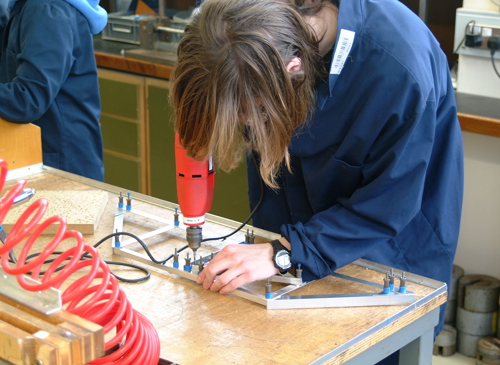
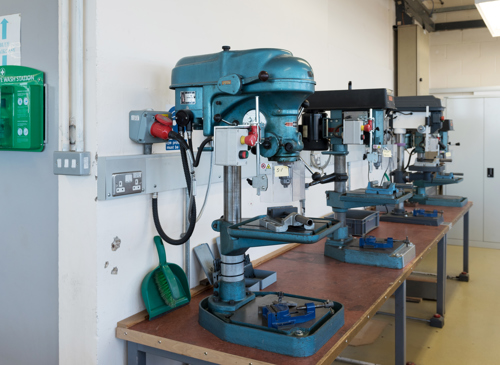

Design, Build, Test Lab
Project and design work forms a major part of the Engineering courses. The Design, Build & Test Lab is home to a range of equipment which gives you the opportunity to get hands-on experience with projects to test and develop your engineering knowledge. The workshop is equipped with manual milling machines and lathe, sheet metal cutting and folding, spot welders, pillar drills and hand tools. In your first year you are likely to use the DBT Lab to build and test a Truss Bridge from riveted aluminium alloy extrusion, with the best constructions typically weighing less than 700g. Once completed, you will use a hydraulic pump in front of your classmates to test the bridge until it buckles. You would usually also complete a simple turning exercise on one of the 6 student lathes. Later in your second year you may use the workshop to test your fabrication skills by making a toolbox, or you might construct walking robots using the CNC router.
A wide variety of parts get made in this Lab for fourth year research projects and to support academic research in the department. The area is also home to the staff & student workshop where trained staff and students (undergraduate and postgraduate) are able to use the space to work on their own projects. Most notably, the DBT Lab gets used to help produce several parts for Oxford’s Formula Student racing team.
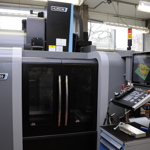
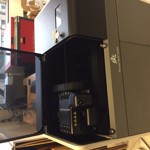
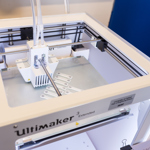
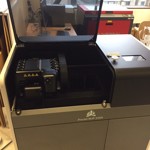



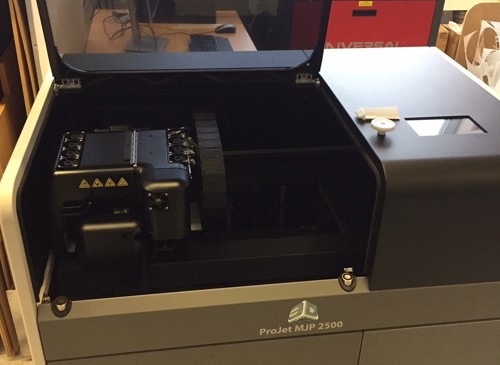
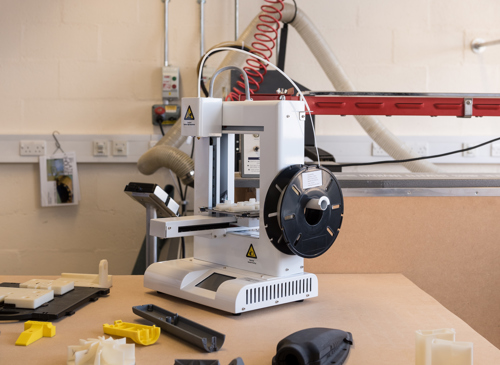
3D printing lab
The 3D Printing Lab is our newest lab (opened: 2019) and provides staff and students with a dedicated space to produce physical prototypes of their engineering design projects. There is a wide range of different equipment available for use in the Lab allowing print resolutions down to 15 microns over areas up to 900cm2.
This Lab is used across the whole undergraduate course to help you visualise your designs as a 3D model before you build the full scale model in another Lab. For example, as a first year student you are likely to design a bridge as part of your practical mechanical lab. However, before you construct it out of aluminium, you are able to print your CAD design in order to test a small-scale model of your bridge.
As you start to do some of your own research in the research projects in your third and fourth years, you are able to discuss your ideas and theory with your research supervisors using a printed prototype design. Additionally, during term time, there is also a 3D printing student club who meet weekly and are able to explore 3D design and 3D printing beyond the scope of your academic studies.
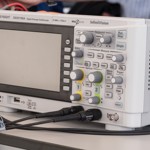
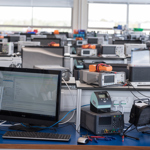
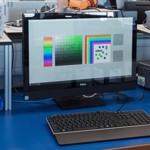
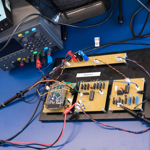
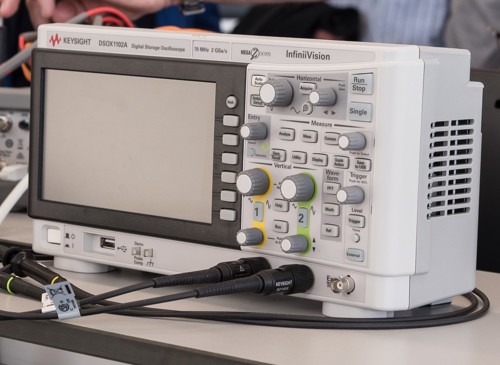
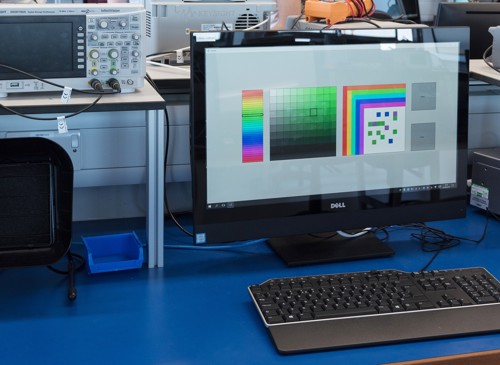
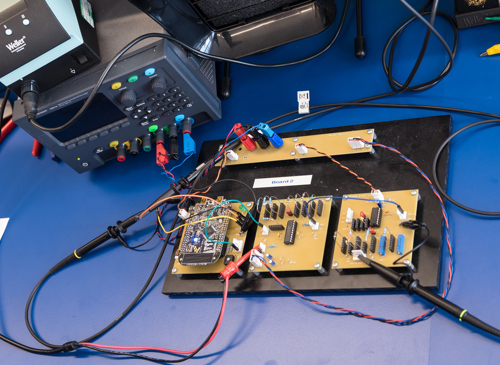
Electrical Lab
In the first year, you usually have the opportunity to design, build and test a music box and then later in your second year you may get the opportunity to learn about printed circuit board design, programming Field Programmable Gate Arrays and analogue filter design. This space is also open to you in your fourth year when you are undertaking research for your individual research project.
The Electrical Lab also has a printed circuit board milling machine which allows you to manufacture your own circuit boards in-house!
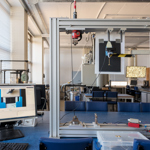
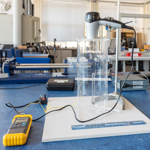
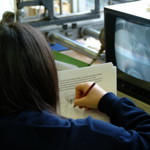
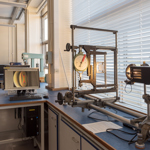
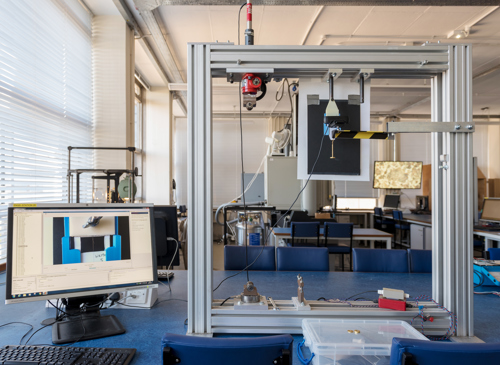
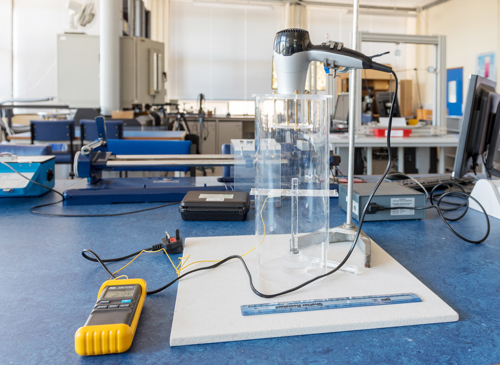
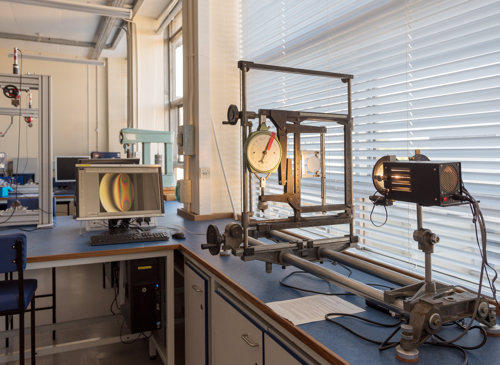
Materials lab
A wide variety of teaching and research activities takes place in the Materials Lab with undergraduates, postgraduates and postdoctoral researchers all using the space. The equipment in this Lab is used for testing materials in many ways. From the first stages of processing and looking at the microstructure, to analysing the properties of the material under different environmental conditions. As an undergraduate you are likely to have several practical labs in the Materials Lab where you will test the theory of material behaviours taught in your lectures. For example, in your first year you might complete a buckling experiment, testing how a beam bends to understand its properties. Or use the Impact Testing Machine to see how much energy is needed to break different materials.
In your second year, you might complete the photo elastic experiment where light is used to visualise shear stress through a specimen. Or even using a specially set up webcam to view how a strand of hair breaks.
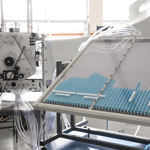
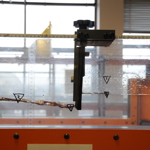
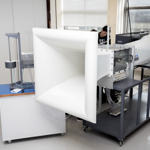
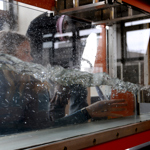
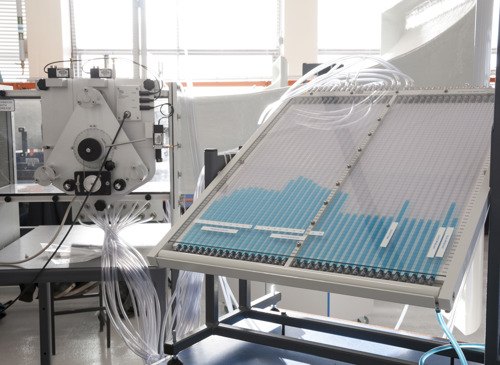

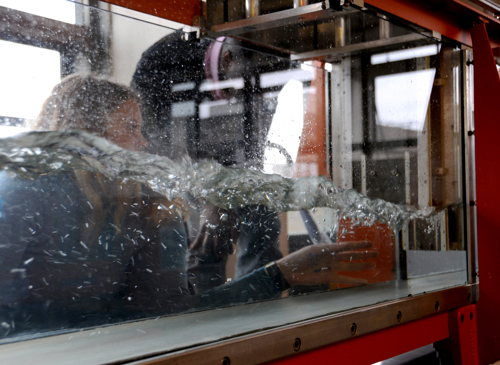
Fluids lab
The Fluids Lab at Oxford is home to 3 flumes, 2 wind tunnels, a Pelton wheel turbine, a Francis turbine and 3 Hilton refrigeration rigs. As a student, you will get the opportunity to use most of this equipment to test and confirm theory that you learn about in your lectures.
In one of your second year labs you might explore the fluid mechanics involved in the air flow over a model cylinders and aerofoils while looking at the energy flow and conservation in thermos-fluid processes. Later on in your studies you might be in this Lab looking at the flow of water under a sluice gate, along with the associated hydraulic jump, or evaluating the efficiency of the turbines at different blade angles as part of your coursework.
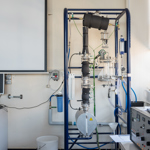
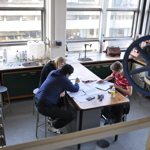


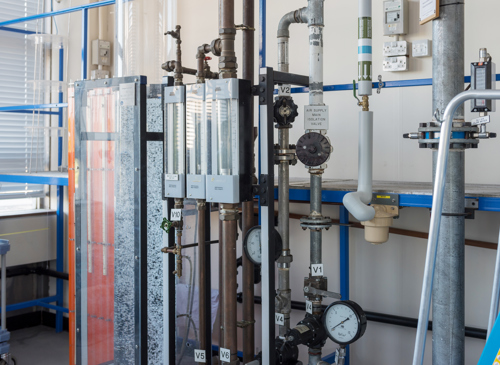
Chemical lab
The Chemical Lab is a space dedicated to studying the concepts of Chemical Engineering. After studying the core principles of engineering in your first and second years, you may choose to specialise in this area and so a lot of your practical lab sessions would take place in the Chemical Lab.
Here you might study the mechanics behind chemical processes used in larger engineering projects, or study the engineering behind the chemicals used in food and drink manufacture.
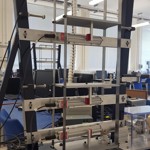
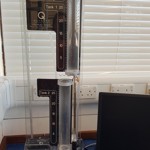


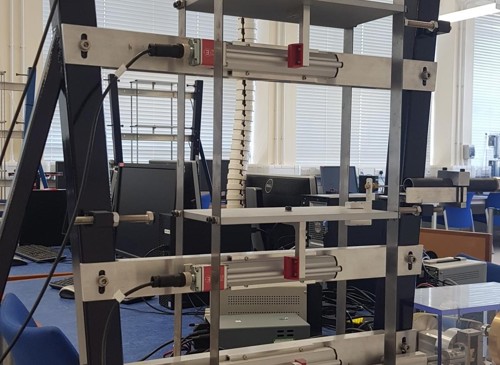
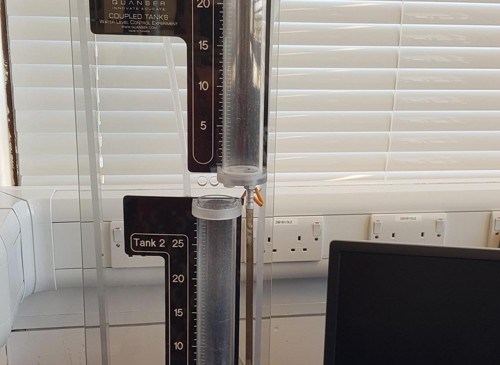
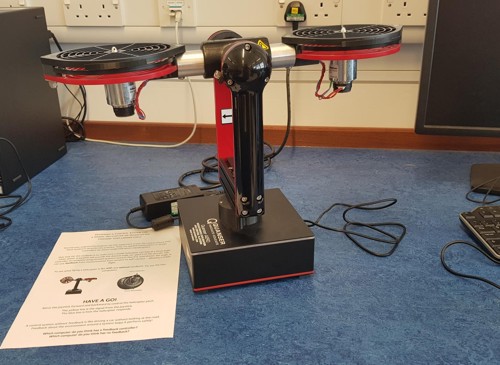
Control Lab
The Control Lab is a flexible teaching space where you are able to explore different aspects of control theory by designing and testing specialised control devices. This area of engineering is introduced in the second year and is all about getting hardware to behave in a certain way. Most people have seen a Segway – this is able to stay upright due to some clever mathematical modelling and a bit of computer programming. You may get the option to design the systems behind a Segway, to get a Lego robot to play football!
To complement what you learn in lectures, you get hands on experience in this lab designing a controller to allow a helicopter to hover. In this lab you will also find another Structures second year experiment - looking at how a building responds to an earthquake using the “shaky building” equipment.
Later in your studies you could also use the equipment in the Control Lab to test the theory in your 3rd year project or do some analysis on the results of your 4th year research project experiments. An example third year project is inverting a swinging rotary pendulum to get it to self-correct and stay upright. Example fourth year projects that have used this space are programming the flight of a minidrone and using image analysis to find the fastest route for small self-driving racing cars. You may even find yourself working alongside some of our postdoctoral researchers who are also working on their own academic research.
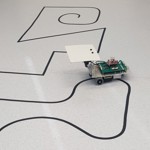
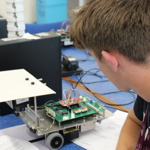
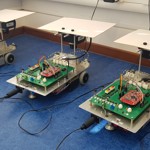
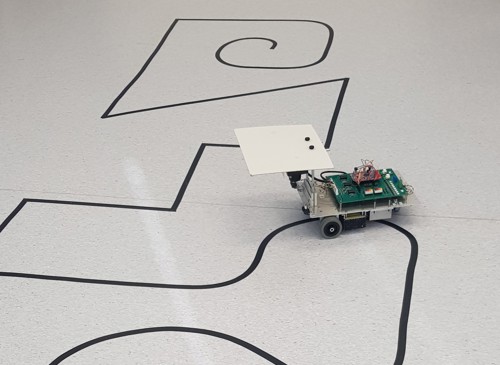
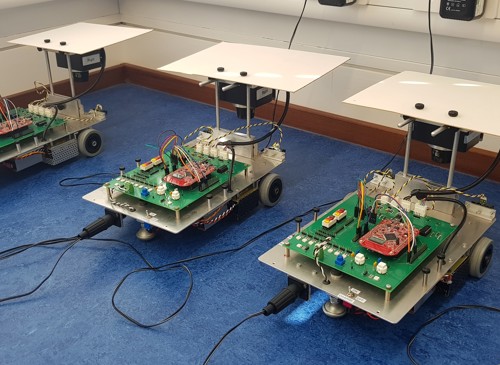
Energy lab
The Energy Lab is a flexible teaching space home to a wide variety of undergraduate practical teaching labs. Although this room is called the Energy laboratory, it is only used for this purpose in Hilary (spring) term. At that time, the room is full of electrical machines and heat transfer experiments. Earlier in the year, in Michaelmas (autumn) term, this is the location of the Communications Lab, where you could experiment with transmission lines and modulation. In Trinity (summer) term, the lab is transformed into the Robotics Lab where you could be trying to program a line-following robot to follow complicated patterns laid out on the floor!

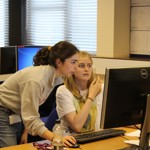
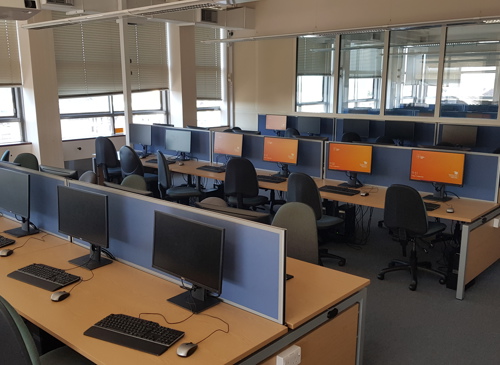
Software Labs
Computing is a major part of modern engineering and, because of this, you will be introduced to a range of professional engineering software packages whilst you are a student here. You are not expected to have any experience with programming when you start the course and so will be taught everything you need to know in one of our dedicated Software Labs.
Some software packages you may use as part of your course include MATLAB (for programming mathematical models) and SolidWorks (for 3D design work). A large range of this software will be available for you to download on your own computer whilst you are a student here, however, the Software Labs are available for use by students throughout the academic term. This is particularly useful if the project you are working on requires a lot of computational power! There are three dedicated software labs at the department containing general purpose Windows computers, Linux computers and high spec Windows machines for 3D design work.
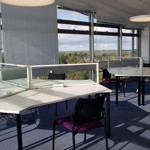
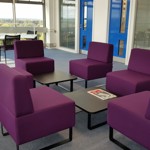
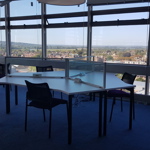
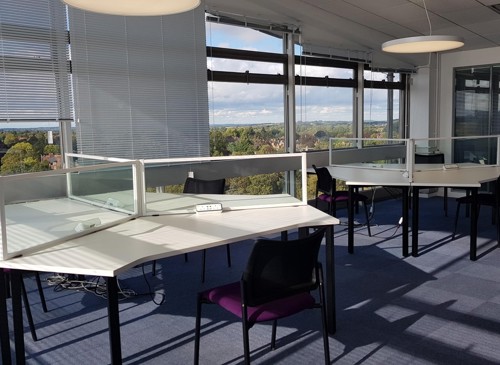
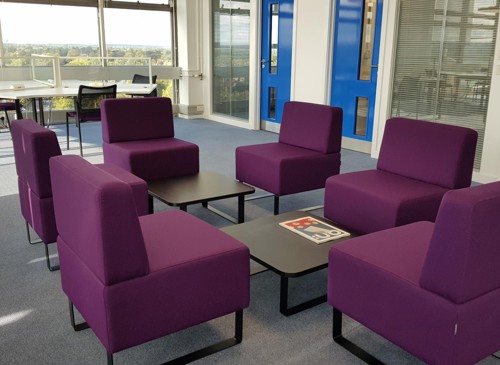
Student Study Area
The Student Study Area is located at the top of the Thom Building and provides arguably some of the best views of the city of Oxford and the surrounding area. In this room there are individual study desks, larger group study tables and small meeting rooms all with dedicated power sockets which you are able to use during the academic term, whenever the building is open. Students in all stages of their academic careers come to this quiet space to study, complete problem sheets, revise for exams, and work on their research projects.
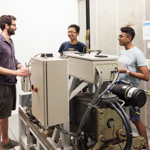
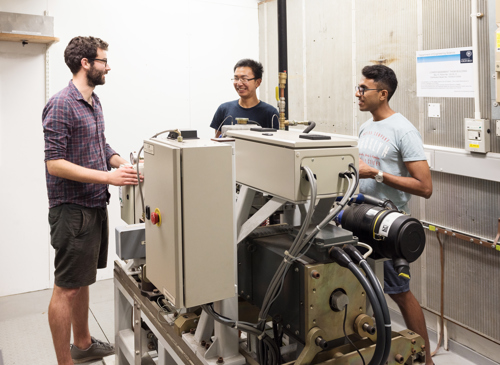
Heat Engines lab
The Heat Engines Lab is a large lab space dedicated to looking at the mechanics of engines and combustion research. Here there are two Daimler Smart engines (0.7 litre, four stroke, spark ignition) hooked up to computers which allow you to measure the input and outputs of the engines as they run. In your first year, you are likely to do an exercise to understand instrument accuracy and calibration, and engine power and efficiency for a range of operating conditions using the Daimler Smart engines.
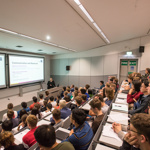
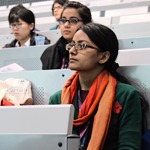
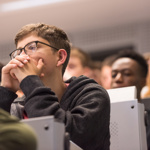
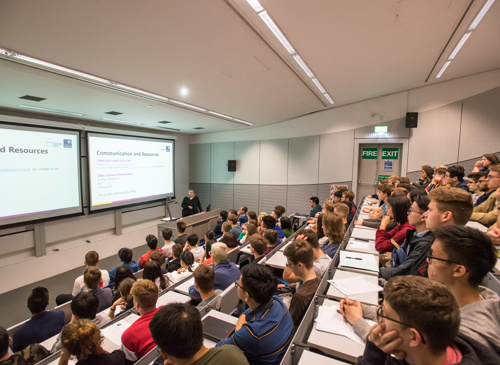
Lecture Theatres
Throughout your degree you will be taught through a mixture of lectures and practical lab work. Your first and second year lectures are likely to take place in our large lecture theatres on the first floor of the Thom Building. Here you will sit with the rest of your year and learn about the core topics that form the basis of almost all engineering, such as mathematics, electronics, electromagnetism, communications, structures and mechanics and thermodynamics. Find out what these lectures are like by checking out our taster lectures.
Once you reach your third year at Oxford, you will start to specialise into your chosen area of engineering and can choose the topics you want to study. As these topics get more specialised, some of your lectures may take place in some of our smaller lecture theatres and classrooms allowing you to have in-depth conversations with your lecturers and classmates.

